If you are looking for a flavorful way to spice up your dinner table, look no further than this delicious recipe for Panang Curry. This rich and creamy dish hails from Thailand and is known for its bold flavors and fragrant aroma. Whether you are a seasoned cook or just starting out in the kitchen, making Panang Curry is both simple and rewarding. The beauty of this dish lies in its versatility; you can easily customize it with your choice of protein or vegetables. In this article, we will guide you through every step of creating an unforgettable dining experience with homemade Panang Curry.
The key to an authentic Panang Curry is in the balance of flavors—sweet, salty, spicy, and sour—all harmoniously combined. With a base of coconut milk and a unique blend of spices, this dish delivers a taste that will transport you to the bustling streets of Thailand. As we dive into the ingredients and preparation steps, you’ll discover how each component contributes not only to taste but also to texture. So grab your apron and let’s embark on a culinary journey that promises to delight your taste buds!
Main Ingredients
Coconut Milk
Coconut milk serves as the creamy base for our Panang Curry. It adds richness and depth while balancing the spicy flavors from the curry paste. For this recipe, you’ll need two cans (about 400 ml each) of full-fat coconut milk to achieve that luscious texture. Look for brands that use pure coconut extract without additives for the best flavor.
Red Curry Paste
An essential element in any Thai curry is red curry paste. This mixture typically includes red chilies, garlic, shallots, lemongrass, galangal, and other spices that create a robust flavor profile. For our recipe, 3 tablespoons of red curry paste will provide just the right amount of heat without overwhelming your palate.
Protein (Chicken/Tofu)
You can choose either chicken or tofu as your protein source in this recipe. If using chicken breast or thighs, about 500 grams will suffice. For a vegetarian option, opt for firm tofu (around 400 grams), cut into cubes. Both options absorb the rich flavors beautifully while providing substance to your dish.
Vegetables
A colorful array of vegetables adds nutrition as well as visual appeal to your curry. We recommend using bell peppers (1 each of red and green), carrots (2 medium), and snap peas (200 grams). Slice them thinly so they cook evenly and retain some crunch when served.
Basil Leaves
Fresh basil leaves enhance the aroma and add freshness to your dish at the end of cooking. You’ll need about one cup of loosely packed basil leaves for garnish. Thai basil is ideal if available; otherwise regular basil will also do wonders.
How to Prepare Panang Curry
Step One: Prepare Your Ingredients
Before diving into cooking your Panang Curry, take some time to prep all ingredients properly. Start by slicing your chosen protein into bite-sized pieces; if using chicken, ensure it’s evenly cut for consistent cooking times. Next, chop your vegetables: slice bell peppers into strips and julienne carrots into thin matchsticks for quicker cooking. Lastly, rinse your basil leaves under cold water to remove any dirt or impurities before patting them dry with a paper towel.
Having everything prepped beforehand will streamline your cooking process significantly and allow you to focus on combining flavors effectively rather than scrambling at the last minute.
Step Two: Cook the Protein
In a large skillet or wok over medium heat, add two tablespoons of vegetable oil until hot but not smoking. If you’re using chicken as your protein source, add it now along with a pinch of salt to enhance flavor while cooking it thoroughly—about 5-7 minutes should do the trick until it’s no longer pink inside.
For those opting for tofu instead: add it once the oil is hot enough—carefully place cubes in so they sear nicely without breaking apart too soon! Cook until golden brown on all sides—this usually takes around 8–10 minutes depending on how crispy you’d like it.
Once cooked through either way—transfer protein onto a plate temporarily while we prepare our sauce!
Step Three: Make Your Sauce
Using the same skillet where you cooked your protein will help incorporate those delightful browned bits left behind—this adds even more flavor! Lower the heat slightly before adding three tablespoons of red curry paste directly into hot oil; stir continuously until fragrant—about one minute should suffice.
Afterward pour in one can (400 ml) of coconut milk gradually while stirring continuously against lumps forming from paste mixing together properly with creaminess! Allow it simmer gently until bubbles start rising before returning previously cooked protein back into sauce mixture along with remaining can coconut milk—you’ll create an unbelievably lush texture!
At this point feel free to adjust seasoning by adding salt/sugar according preference levels—now let everything simmer together so flavors meld beautifully over medium-low heat approximately 10-15 minutes!
Step Four: Add Vegetables
Once you’ve achieved that perfect balance between sweetness from coconut milk richness alongside spiciness from curry paste—it’s time introduce those vibrant veggies you prepped earlier! Start by adding sliced bell peppers followed by carrots ensuring they’re adequately submerged within sauce’s embrace!
Stir everything together gently allowing vegetables soften up while absorbing essence surrounding them; cover skillet momentarily letting steam work its magic approximately another 5-7 minutes—that crunchiness should still remain intact though!
Lastly toss in snap peas during last minute cooking time alongside freshly rinsed basil leaves stirring well once again ensuring even distribution throughout dish before removing heat altogether—it’s now ready serve up deliciously!
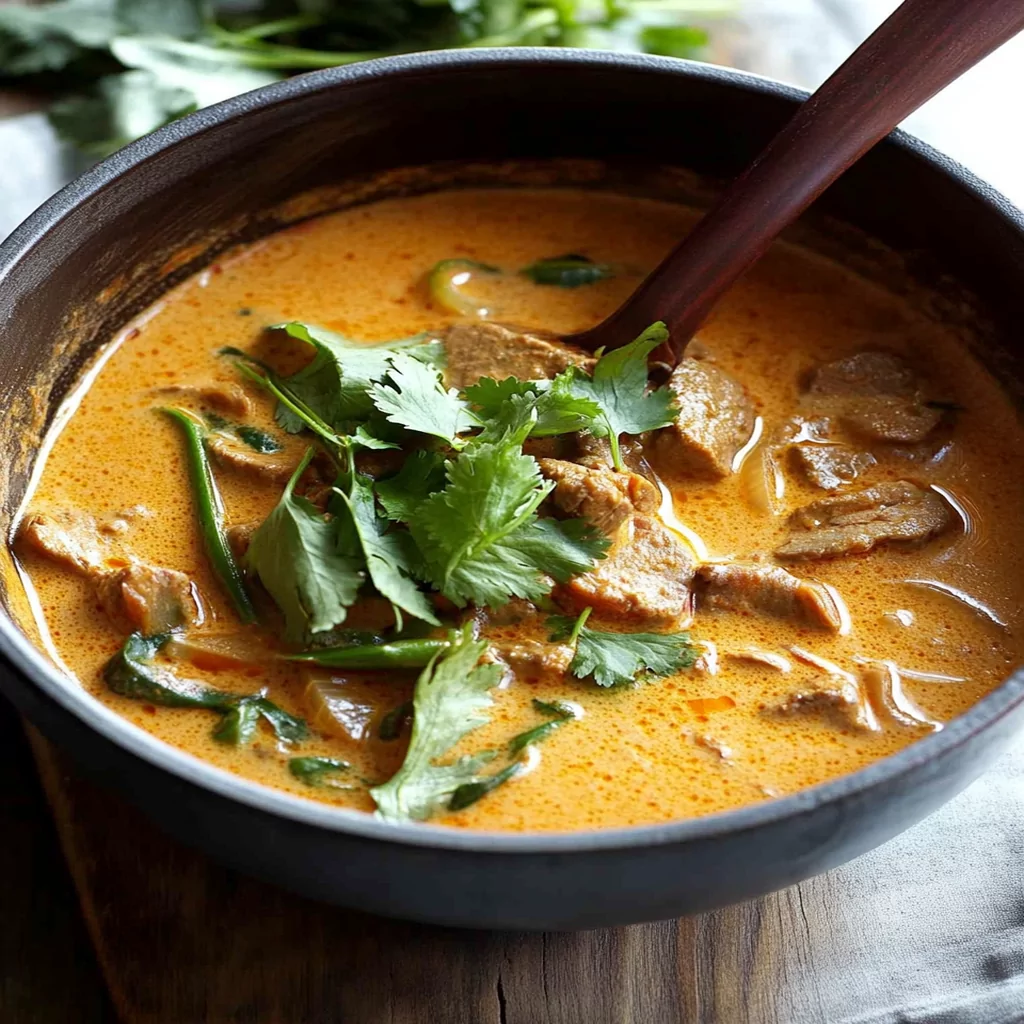
Serving and Storing Tips
Serving Suggestions
When serving up your delightful home-cooked Panang Curry consider pairing it with fluffy jasmine rice or fragrant coconut rice which complements its rich flavors perfectly! You can also offer lime wedges on side—a squeeze adds brightness enhancing overall experience wonderfully!
For an extra pop color garnish finished plates liberally shredded fresh basil leaves along side thinly sliced red chili pepper if desired! Not only does presentation matter but these tweaks elevate enjoyment factor immensely ensuring guests leave satisfied every single time!
If you’re keen on boldness try serving individual bowls topped off crispy fried shallots too—they provide textural contrast alongside aromatic goodness enhancing overall dining experience even further!
Storing Leftovers
In case there are leftovers after enjoying this scrumptious meal don’t fret—you can safely store any remaining portions in airtight container kept refrigerated up-to 3 days maximum freshness retained still enjoyed later!
When reheating simply transfer desired amount onto saucepan gently warming over low-medium heat until heated through thoroughly—that way avoid drying out precious moisture within creamy goodness surrounding proteins/veggies alike allowing every bite remain delectable regardless next day indulging occasions arise down road!
For longer preservation options consider freezing portions instead; place cooled leftovers inside freezer-safe bags storing flat minimizing air exposure preserving quality better ideally lasting month – just thaw overnight refrig prior reheating whenever craving hits again!
Mistakes to avoid
When making Panang Curry, it’s essential to steer clear of common pitfalls that can diminish the dish’s flavor and authenticity. One major mistake is using the wrong type of curry paste. Authentic Panang Curry relies on a specific blend of spices and herbs, which contribute to its rich and aromatic profile. Using generic curry paste may result in a lackluster flavor that does not reflect the true essence of this dish. Always opt for high-quality Panang Curry paste or make your own from scratch to ensure depth and authenticity.
Another mistake is neglecting the balance of flavors. Panang Curry is known for its harmonious blend of sweet, salty, and spicy notes, so it’s crucial to taste as you cook. Overdoing one ingredient can throw off the entire dish. For instance, adding too much coconut milk without balancing with lime juice or fish sauce can lead to an overly creamy and sweet curry that lacks complexity.
Choosing the wrong protein also affects the outcome of your dish. While beef is traditional for Panang Curry, using chicken or tofu can yield different results in texture and taste. Ensure you select a protein that absorbs flavors well and complements the curry’s richness.
Finally, failing to garnish properly can leave your Panang Curry looking unappealing and flat in flavor. Fresh herbs like Thai basil or cilantro add a pop of color and freshness that enhances both presentation and taste. Don’t skip this crucial step; it elevates your dish visually and culinarily.
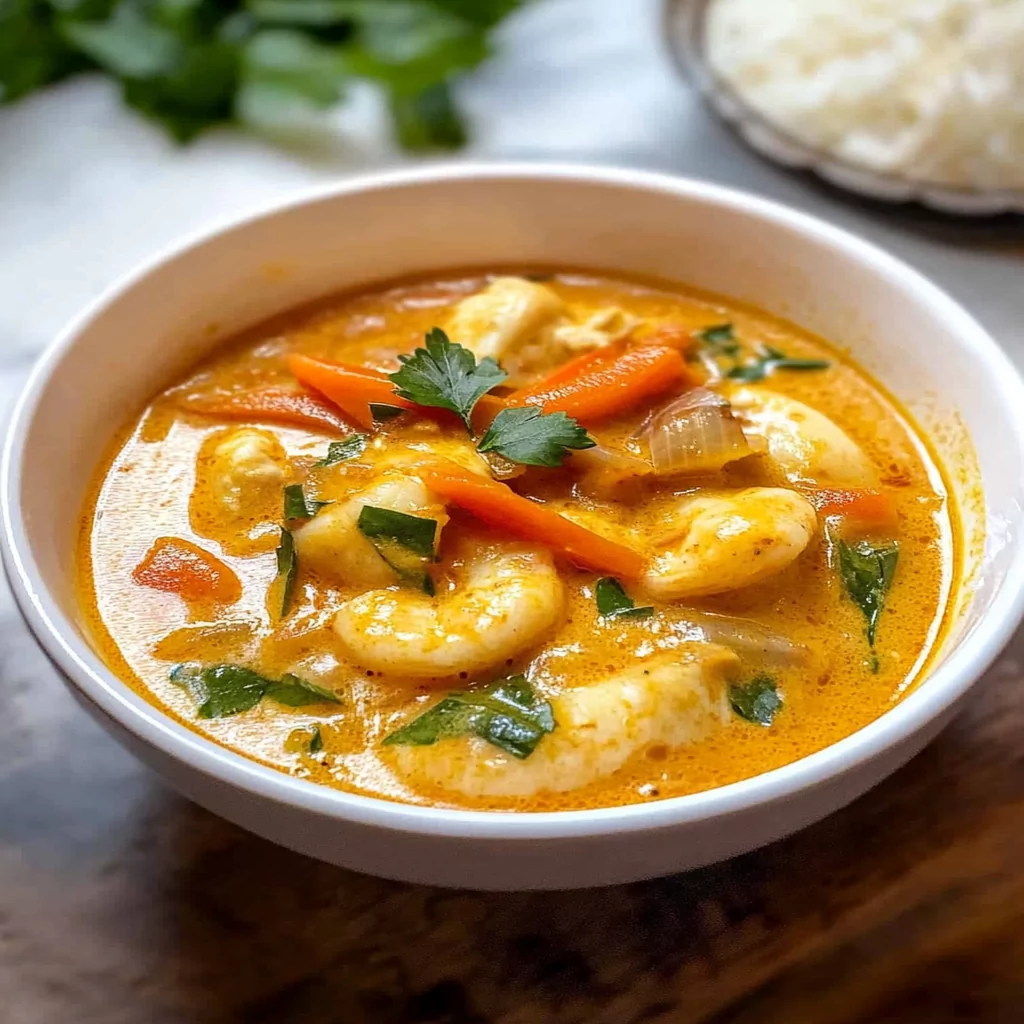
Tips and tricks
To master the art of cooking Panang Curry, consider incorporating these practical tips into your culinary routine. First, always start with fresh ingredients. The vibrant colors and intense flavors of fresh produce significantly enhance your dish. Whenever possible, choose organic vegetables and high-quality meats or plant-based proteins. Freshness directly impacts both flavor and texture in your curry.
Another helpful tip is to toast your spices before adding them to the dish. Doing this releases their essential oils, enhancing their aroma and flavor profile. When you begin making your curry paste or sautéing aromatics like garlic or ginger, take a moment to toast any ground spices gently in oil for a minute or two until fragrant.
Also, be mindful of cooking times for each ingredient added to your Panang Curry. For instance, if you are adding vegetables, consider their cooking times carefully so they remain tender yet crisp, rather than mushy. Add quicker-cooking veggies later in the process while allowing heartier ones more time in the pot.
Lastly, adjust spice levels gradually to suit your palate. If you’re unsure about how spicy you want your curry to be, start with less chili paste than recommended in recipes. You can always add more later on as it simmers; this approach will prevent overwhelming heat from dominating the other flavors.
Suggestions for Panang Curry
If you’re looking for ways to elevate your Panang Curry experience further, consider these suggestions tailored for enhancing both flavor and presentation in this beloved dish. One great way is by experimenting with different proteins beyond traditional beef. While classic recipes often call for beef slices, feel free to try chicken thighs or shrimp for a lighter option that still delivers on taste.
Incorporating seasonal vegetables into your Panang Curry can also create variety in flavor profiles while ensuring freshness in every bite. Seasonal ingredients like bell peppers during summer or butternut squash in fall lend unique sweetness that complements the rich coconut base beautifully.
Garnishing appropriately is another suggestion worth considering; fresh herbs such as Thai basil provide not just visual appeal but also an aromatic lift that brightens up each bowl served. Additionally, serve with lime wedges on the side so diners can customize acidity according to their preference.
Lastly, pay attention to serving methods. Serve your curry over jasmine rice or alongside roti bread; both options complement its rich sauce wonderfully while providing a satisfying texture contrast against creamy elements within the dish itself.
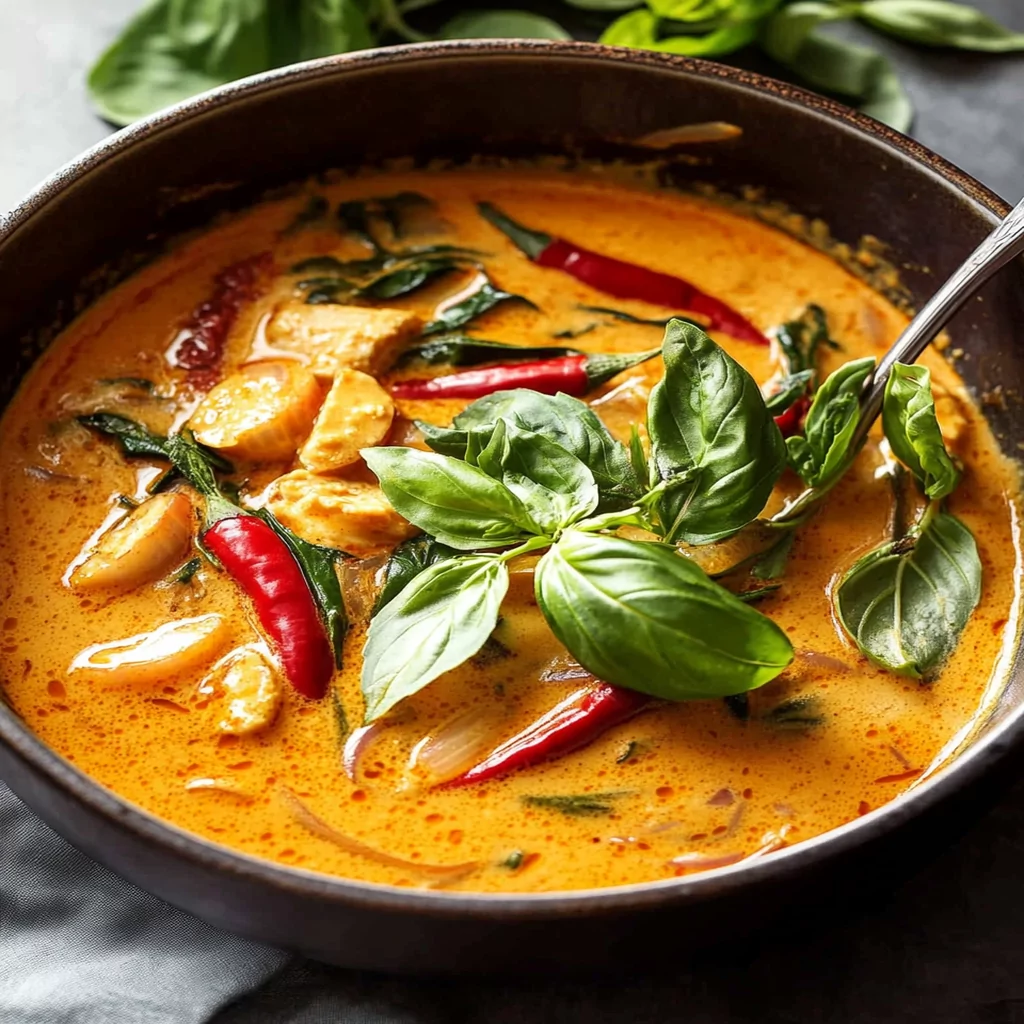
FAQs
What is Panang Curry?
Panang Curry is a type of Thai curry known for its thick consistency and rich flavor profile. It typically includes coconut milk blended with specific spices such as lemongrass, galangal, kaffir lime leaves, coriander root, and red chili paste known as ‘Nam Prik Pao.’ This unique combination creates a deliciously aromatic dish that appeals widely across various palates. Often prepared with beef or chicken as protein sources alongside vegetables like bell peppers or green beans, this curry offers both warmth from spices along with comforting creaminess derived from coconut milk.
How do I store leftover Panang Curry?
Properly storing leftover Panang Curry ensures you can enjoy its delightful flavors again later without compromising quality! Start by allowing the curry to cool down completely at room temperature before transferring it into airtight containers—glass jars work best since they don’t absorb odors like plastic might over time! Once sealed tightly shut—label them if desired—store them inside either refrigerator (up to 4 days) or freezer (upwards of 3 months). When reheating frozen portions on stovetops over medium heat until warmed through while stirring gently helps maintain creaminess without separation occurring too quickly!
Can I make Panang Curry vegetarian?
Absolutely! Making vegetarian versions of Panang Curry simply involves swapping out meat with alternatives like tofu or seitan! Additionally using vegetable broth instead of fish sauce keeps flavors robust without sacrificing authenticity! Pair these substitutes alongside colorful veggies such as carrots snap peas eggplants zucchini which provide ample texture contrast while still soaking up all those delicious fragrant sauces during cooking process!
What makes Panang Curry different from other curries?
The main difference between Panang Curry compared to other types lies primarily within its consistency along with distinct flavor profiles derived from specific ingredients used during preparation! Unlike traditional Thai curries—which tend toward thinner soups—Panangs possess thicker textures often reminiscent almost stew-like dishes thanks due generous amounts being poured coconut milk combined red chili pastes used create richer tastes than say green yellow counterparts found elsewhere throughout Southeast Asia!
How spicy is Panang Curry?
Spiciness levels found within any given batch largely depend upon individual preferences along with how much chili paste gets added during preparation stages! Generally speaking though most versions offer mild heat balanced out nicely by sweetness derived from coconut milk plus aromatic notes coming forth from herbs used within recipe itself resulting overall pleasant experience without overwhelming palate entirely!
Can I use store-bought curry paste for my Panang Curry?
While homemade versions certainly yield fresher results using store-bought varieties remains viable option especially when pressed for time! Just ensure checking labels closely before purchasing since some brands may include artificial preservatives additives which could alter final product’s quality negatively—opting instead those made entirely natural ingredients guarantees maintaining authentic taste throughout process achieving desired outcomes effortlessly!
Conclusion
In conclusion, mastering the art of making authentic Panang Curry requires awareness of common mistakes along with insightful tips that enhance both flavor and presentation aspects effectively! By avoiding pitfalls like incorrect spice choices neglecting garnishes ensuring freshness throughout ingredient selections cooks will find themselves creating truly remarkable dishes sure impress family friends alike! Remember experimenting different proteins seasonal vegetables opens doors new tastes exciting possibilities enrich overall dining experiences enjoyed around table together sharing love food fosters connections deeper understanding culture traditions tied within delicious meals served plates afternoon delightfully warming homes hearts alike savoring moments spent together gathering everyone enjoys best life has offer culinary delights shared enriching lives one plate time!
Print
Panang Curry
- Prep Time: 15 minutes
- Cook Time: 25 minutes
- Total Time: 40 minutes
Description
This rich and creamy Panang Curry is a flavorful Thai dish combining coconut milk, red curry paste, and your choice of chicken or tofu. With vibrant vegetables and aromatic basil, it’s a comforting meal perfect for any day.
Ingredients
- 2 cans (400 ml each) full-fat coconut milk
- 3 tbsp red curry paste
- 500 g chicken (or 400 g firm tofu)
- 1 red bell pepper, sliced
- 1 green bell pepper, sliced
- 2 medium carrots, julienned
- 200 g snap peas
- 1 cup fresh basil leaves
- 2 tbsp vegetable oil
- Salt and sugar, to taste
Instructions
- Prepare Ingredients: Slice chicken or tofu into bite-sized pieces. Chop vegetables (bell peppers, carrots) and rinse basil leaves.
- Cook Protein: Heat oil in a skillet, cook chicken (5–7 min) or tofu (8–10 min) until done. Remove and set aside.
- Make Sauce: In the same skillet, sauté curry paste until fragrant. Gradually add one can of coconut milk, stirring. Return protein to skillet, add the second can, and simmer for 10–15 min.
- Add Vegetables: Stir in bell peppers, carrots, and snap peas. Cover and cook for 5–7 min. Add basil leaves, stir, and remove from heat.
Notes
- For a spicier kick, add a pinch of chili flakes.
- Substitute Thai basil with regular basil if unavailable.
- Serve with steamed jasmine rice for a complete meal.

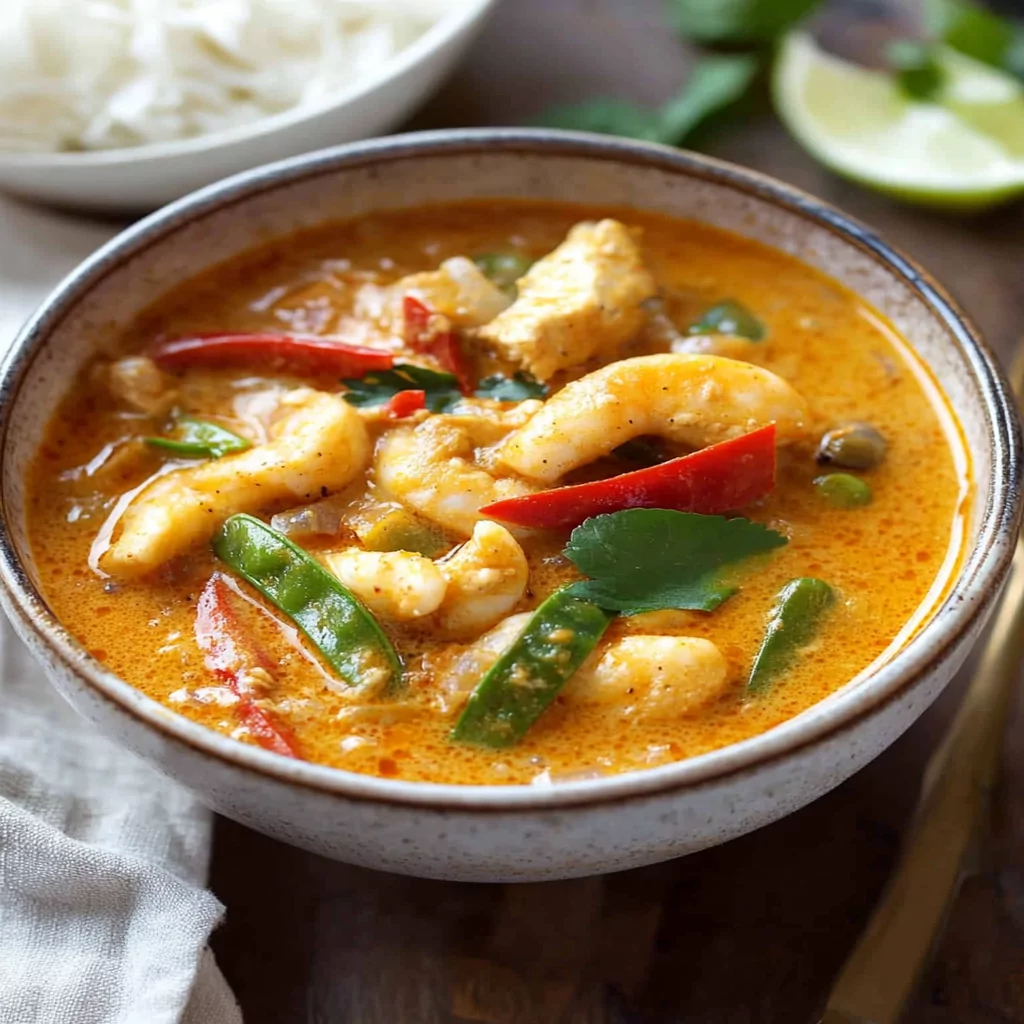
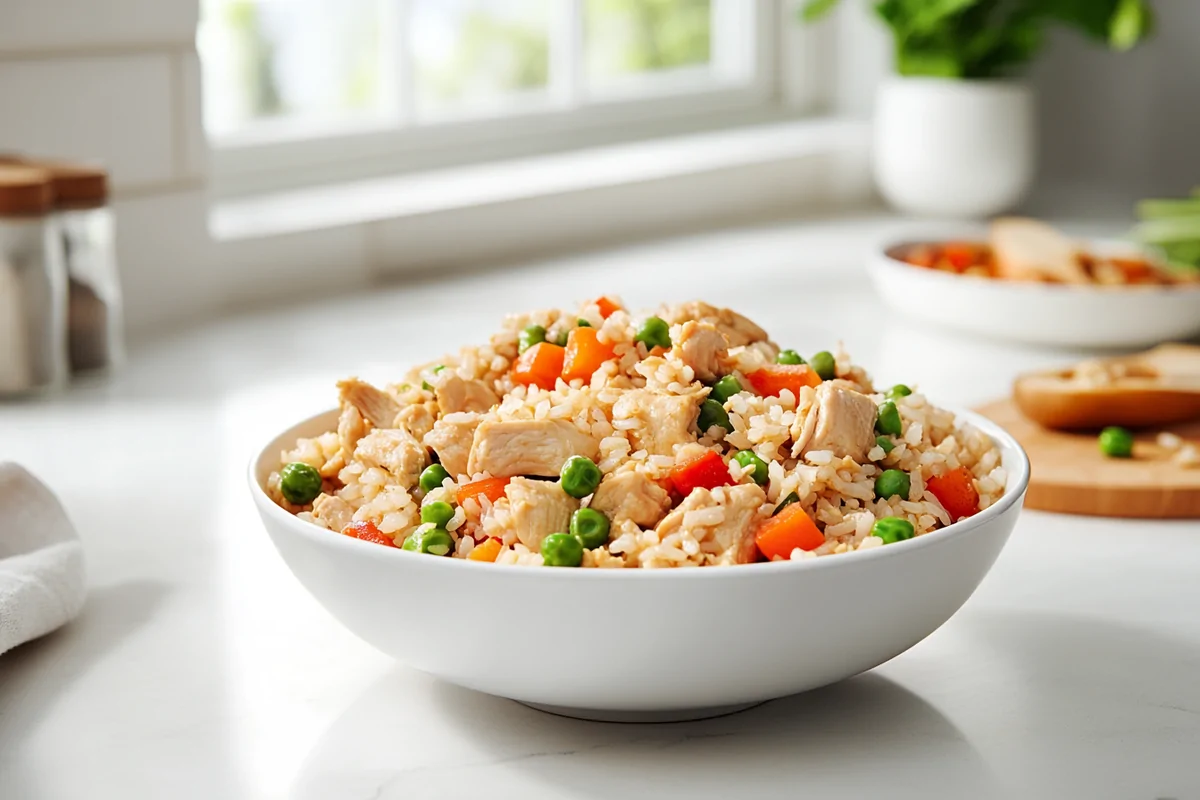
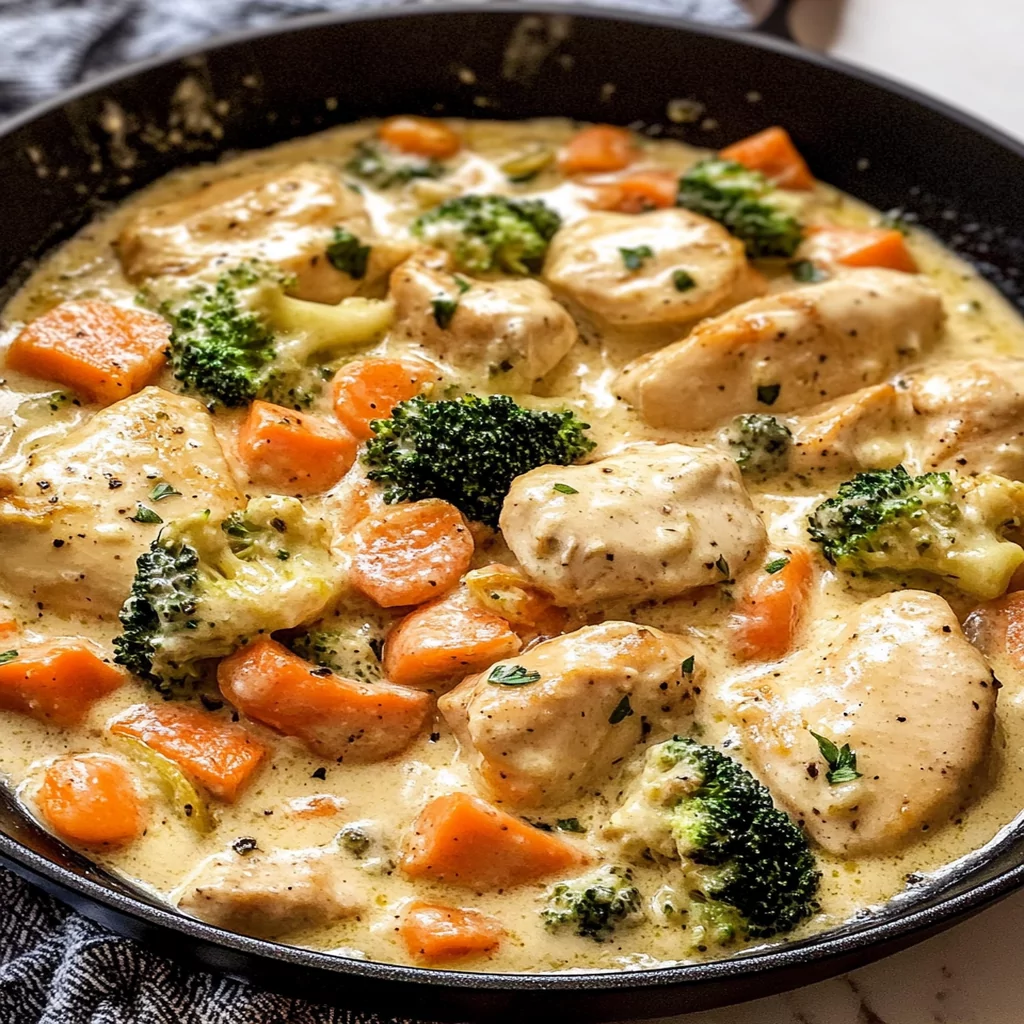
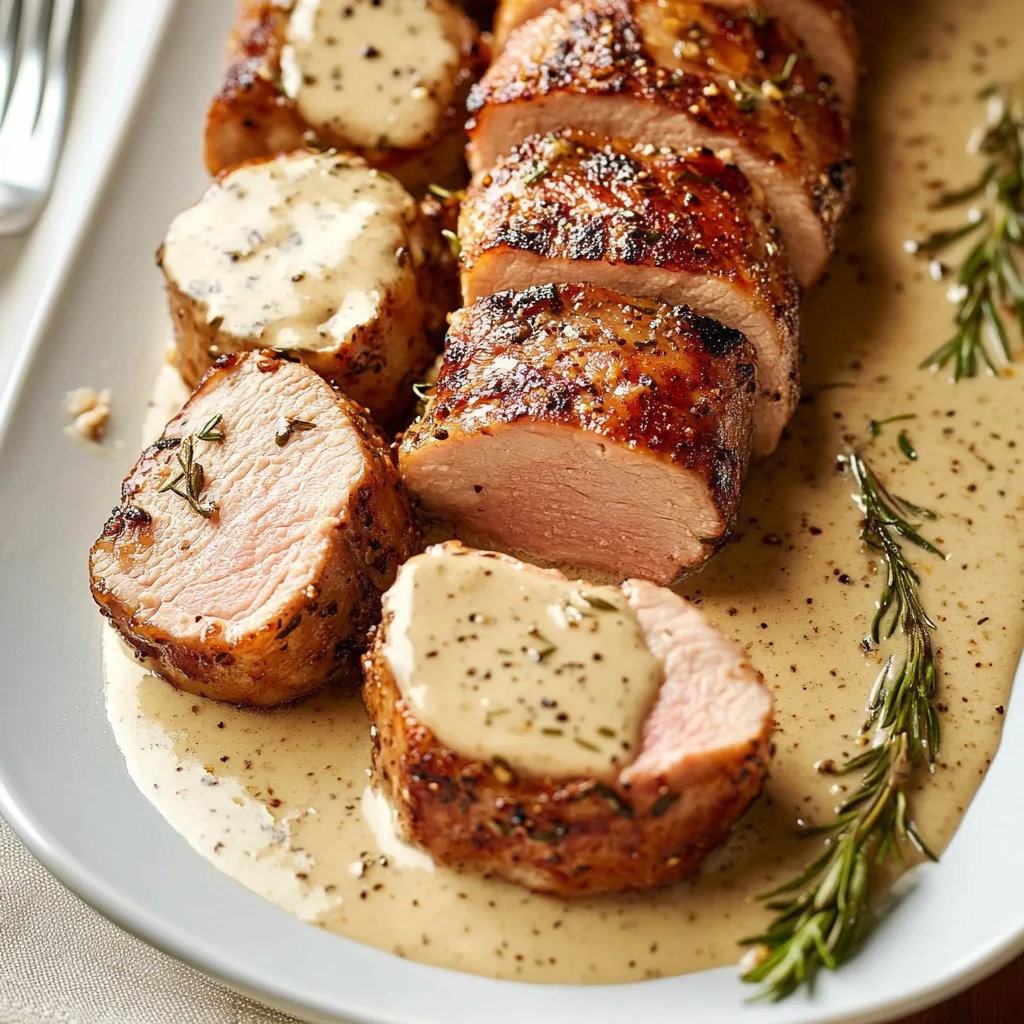
Leave a Comment